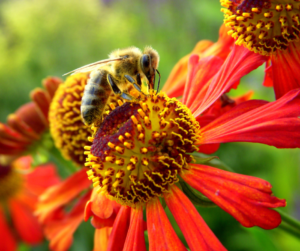For generations, zoos have served as sanctuaries for exotic animals, offering glimpses into fascinating worlds we might never experience firsthand. But in recent years, a chorus of voices has questioned the ethics and efficacy of confining wild creatures within artificial habitats. Enter the burgeoning concept of conservation corridors: ambitious landscapes that stitch together fragmented ecosystems, offering animals the freedom to roam and reproduce, and safeguarding biodiversity for future generations.
The debate surrounding zoos hinges on a fundamental question: animal welfare. Caging, even in meticulously designed enclosures, restricts natural behaviors and instincts. Imagine a majestic lion, born beneath the endless canvas of the savannah, pacing the confines of a concrete enclosure, its powerful roar echoing off sterile walls. Studies have shown that prolonged captivity can lead to stress, abnormal behaviors, and even physical ailments [1].


Beyond the ethical concerns, zoos face limitations in achieving genuine conservation goals. While captive breeding programs have successfully bolstered some endangered populations, critics argue they often prioritize genetic diversity for aesthetic appeal over traits crucial for survival in the wild [2]. Furthermore, isolated zoo populations lack the ecological pressures and interactions that drive natural selection and adaptation, weakening their long-term viability in wild environments.
However, zoos also provide undeniable value. Educational programs foster empathy and understanding of the natural world, igniting a passion for conservation in young minds. They offer vital research opportunities, contributing to our understanding of animal behavior and ecological processes [3]. These contributions shouldn’t be dismissed as we transition toward more holistic conservation solutions.
Conservation corridors emerge as a promising alternative. These vast swathes of restored habitat reconnect fragmented landscapes, allowing species to migrate freely, find mates, and establish robust populations. Imagine majestic elephants traversing ancient migration routes, their trumpeting calls echoing across expansive landscapes. Success stories like the Yellowstone to Yukon Conservation Initiative in North America demonstrate the transformative power of corridors in reviving ecosystems and restoring ecological balance [4].

Developing conservation corridors presents its own set of challenges. Land acquisition, securing funding, and managing human-wildlife interactions necessitate meticulous planning and long-term commitment. Yet, the benefits extend far beyond animal welfare. Habitat restoration safeguards essential ecosystem services, mitigates climate change by protecting carbon sinks, and bolsters community resilience to natural disasters [5].
Phasing out zoos doesn’t require a sudden closure of doors. A gradual approach focused on animal welfare can involve repurposing facilities for rehabilitation and research, relocating individuals to sanctuaries or established corridors, and amplifying educational outreach to highlight the importance of habitat restoration and wild spaces. Zoos can become valuable partners in this transition, supporting corridor development, providing scientific expertise, and collaborating with conservation organizations.
Ultimately, the future of wildlife conservation lies not in cages, but in expansive landscapes teeming with life. Rethinking zoos and embracing conservation corridors represents not just an ethical imperative for animal welfare, but a strategic investment in the health of our planet and the future of its magnificent biodiversity. Let us join hands, dismantle the walls that confine, and rewild hope for a world where animals roam free, connected by vibrant corridors of life.

Further Research:
- World Wildlife Fund: https://www.worldwildlife.org/species
- Rewilding Network: https://rewilding.org/
- The Wild Animal Sanctuary: https://www.wildanimalsanctuary.org/
- International Union for the Conservation of Nature: https://www.iucn.org/
Sources:
[1] Hosey, G. R., & Melfi, V. A. (2016). Animal welfare in zoos and aquariums: Problems and solutions. Springer International Publishing. [2] Blomqvist, E., & Brotherstone, S. (2005). Genetic integrity and breeding programs in zoos: Designing captive breeding programs for long-term conservation of genetic diversity. Global Change Biology, 11(5), 1459-1470. [3] Hosey, G. R., & Melfi, V. A. (2019). Zoos and aquariums: Conservation, education, and tourism. Routledge. [4] Yellowstone to Yukon Conservation Initiative: https://y2y.net/ [5] IUCN World Commission on Protected Areas: https://www.iucn.org/our-work/protected-areas-and-land-use




